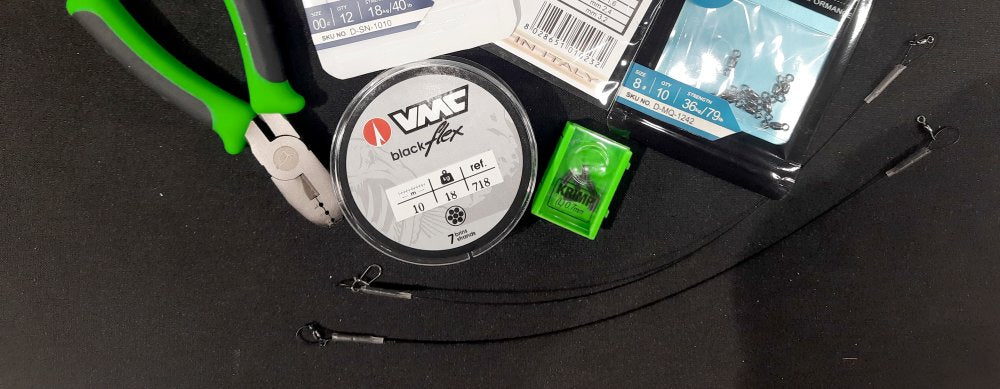
The pike, you know, has one fearsome dentition, and that's why you're reading this article: you want to know How to make a bike steel cable To fish it with the artificial.
With the help of our Ettore, whom you see in the photographs, you explain how to build a cable in a bike steel with Few and simple products and accessories, that you can obviously find on our site and in our shop.
Once the bike steel cable has been made, all you have to do is tie it to the line, apply an artificial to the carabiner and start fishing: the cable we recommend it is pike -proof ... strong!
The procedure for creating the steel cable
Ready? Let's start: follow step by step this guide to images to make your steel cable for pike spinning.
Step 1) the materials
The first thing to look at are the materials needed to make the bike steel cable:
- Steel cable covered with 18 kilos
- Krimp caliper - Krimp size 0.7 mm
- 1.6 mm thermorestringneent tube
- barilot rails size 8
Attention: The choice of the type of steel cable is important. Having to "tie" it through the sleeves, in "Crocentaro" technical jargon, it is better to use a covered steel cable. The cover itself favors a better grip of the sleeve on the cable, making the ending of the ending maximum.

Step 2) the sleeves The first real step is actually this: we take a stroke of 40-50 cm of steel wire covered and we put on one of the two ends, two Krimp sleeves of 0.7 mm Korda.

Step 3) The Asola We fold the steel wire, not before having slipped a Snap carabiner, and make a Asola. We slip the shortest garment of the Asola in the free "tracks" of the two Krimp.

Step 4) the crimpata The Krimp Tool Pinza of Korda comes into action: we exercise progressive pressure on the first sleeve, and then on the second. Deforming, the sleeve will go to block the Asola.


Step 5) the timestringnente We put 2 cm thermorestringneent sleeve in the free leader of the cable to cover the two Crimb. Then, just a few seconds of direct flame are enough to make it narrow and block on the sleeves. What is the thermorestringneent tube for? It covers the "bavetta" of steel thread that comes out of the CRIMP and therefore avoids annoying gars in the launch.

Step 6) the other garment Now we have to deal with the other garment, that is, to "close" the steel cable. It starts from the end, that is: we put the piece of thermorestringneent first, then the two CRIMPs

Step 7) the swivel In the opposite head of the cable there is no carabiner, but a barrel swivel: it is here that we will attack the mother line that comes out of the reel (at the carabiner we obviously attack the artificial).

Step 8) Still Krimp! Here there is little to say: a nice pinzata "closes" the Krimp on the cable. First one, then the other, and you're done.

Step 9) Fiamma x 2 We resume the lighter and "we burn" the thermorestringneent tube for a few seconds until it is greenhouse on the Krimp. We're done!

As you have seen, it takes a few minutes to make a cage in pike steel. The advice we give you is to prepare an escort of these cables in order to always have them ready once in Fishing.
The pike cable made in this way is very versatile, because the material is soft and does not affect the movement of the bait. Of course, we can also use a more "strong" material, but we must remember in this case to adapt the diameter of the CRIMP to the size of the cable itself.
And now what do you still do here, the Lucci await you, go to Fishing!

